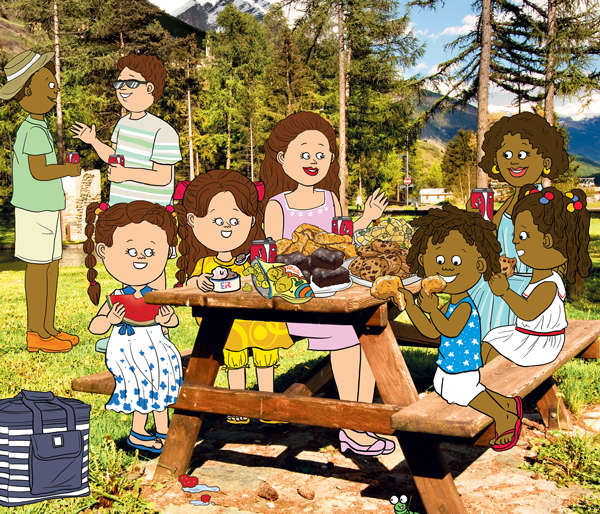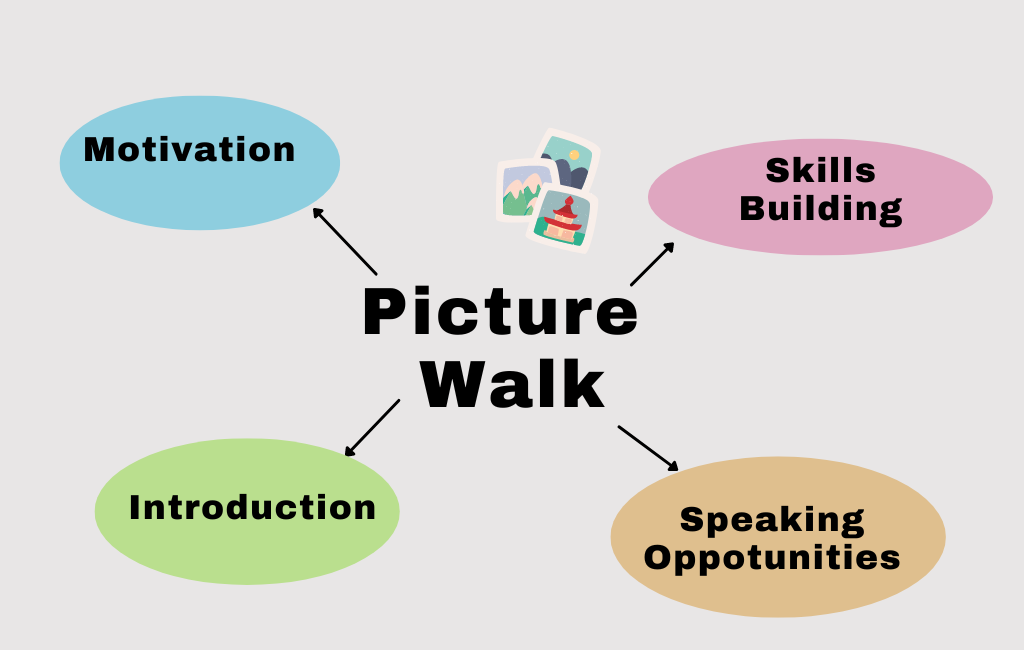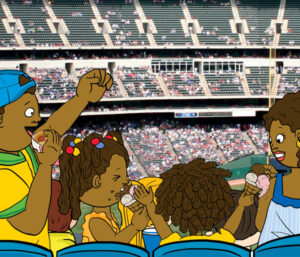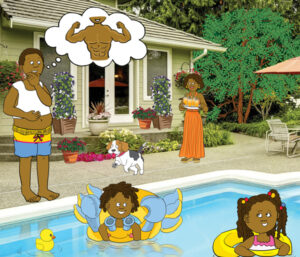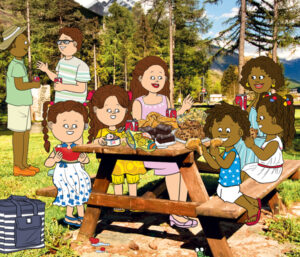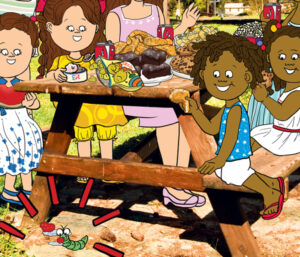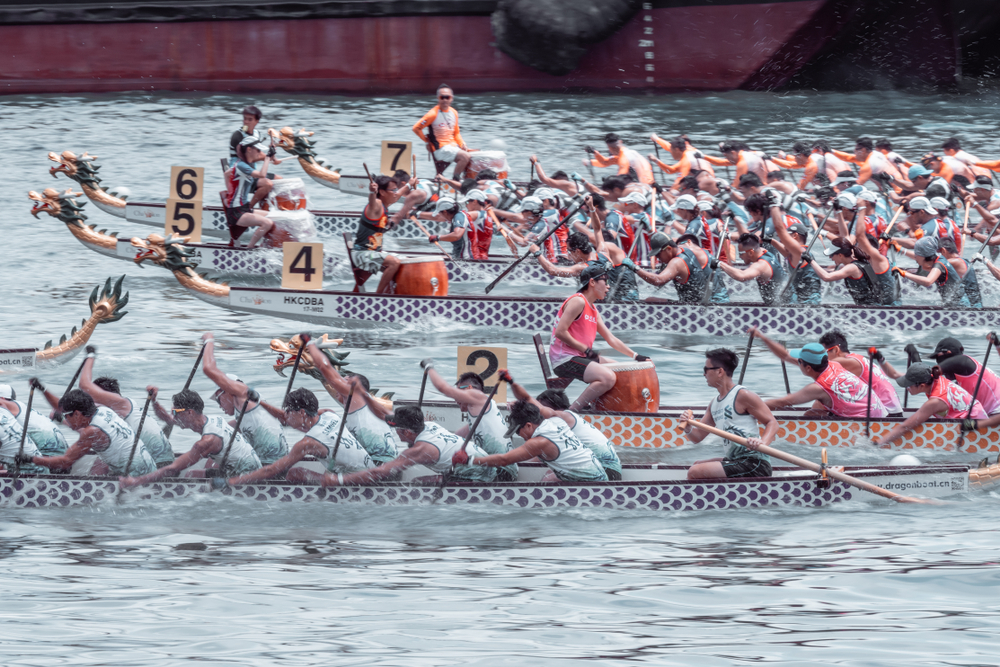Which types of people or things do you see? How many boys are there? How many girls are there? What are they doing? What clothes are they wearing? What do you think is happening in the picture? | Who do you think they are? What do you think they are talking about? What is the weather or season? How do you know? What time do you think it is? Why? Is it quiet or noisy? How do you know? Do the girls like this noisy environment? Do you think this boy can see the girls? Are these people sad or happy? How do you know? Why do girls and boys play different games? | Do the boys catch the ball? What do you think will happen next? What will the person on the phone say? Where is this chicken going? What do you think happens at the end? | Is this the same in your school? Do you also play these games? Tell me about the difference between the games you like to play and these games? If you were here what would you want to do? What personal experience does this image remind you of? | Where is it possible that we see this image? Who could have made this image? Why? What kind of picture is this? What is the purpose of this image? |


